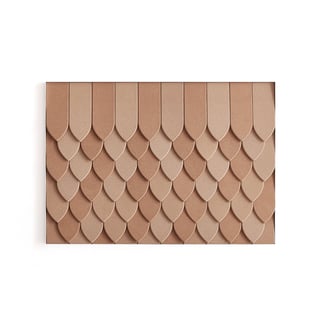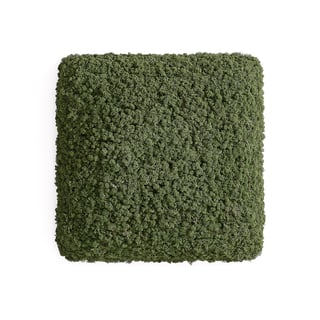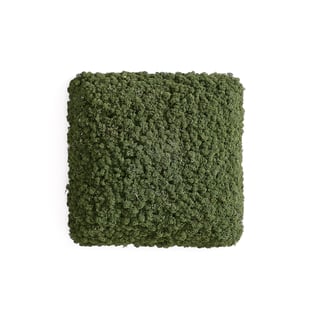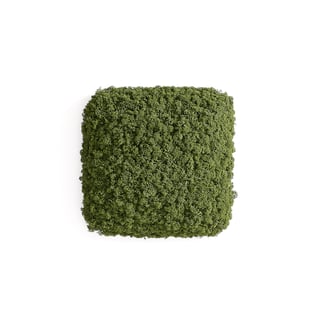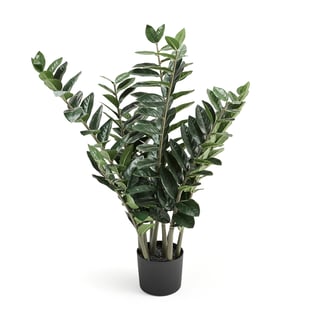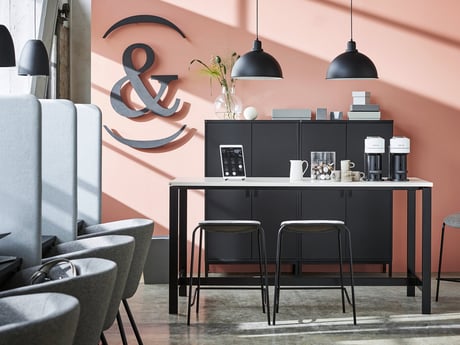
New trend: How biophilic office design creates a better work environment
Greenery in the office is not just a style feature; it can improve both the work environment and employee performance. The concept of biophilic design is on the rise and more companies are now investing in green solutions.
Enhancing the work environment by bringing nature into offices has become increasingly popular. Plants, natural light, earthy colours and natural materials create workspaces that are not just nice to work in but actually boost both employee wellbeing and performance.
“We are seeing increased interest in natural materials and solutions. It’s not just about creating an attractive environment but fundamentally about building a workplace where employees feel good and can perform at their best”, says Elisabet Nilsson, Category Manager for Soft Furnishings & Acoustics at AJ Products.

Reduced sick leave
Research indicates that natural elements like plants and daylight can reduce stress and increase productivity. Greener work environments have also been shown to improve employee wellbeing. A study from the World Green Building Council, for instance, suggests that sick leave can decrease by up to ten percent in workplaces that invest in biophilic design.
At AJ Products, we have adapted our product offering to help companies create greener and more comfortable work environments. For example, a wall-mounted acoustic panel made of natural reindeer lichen, which reduces noise while adding a touch of nature to the workspace.
“These living sound absorbers are a simple way to combine function with design to create a harmonious work environment”, says Elisabet Nilsson.
Don’t underestimate artificial plants
Incorporating nature into the office doesn’t have to be expensive or complicated. Small measures, like adding a few plants or improving natural light, can have a significant effect. A study from the University of Exeter, which examined the effects of monotonous work environments over more than a decade, showed that even the addition of a few potted plants in the office could boost productivity by 15 percent.
“It’s fascinating how something so simple can change the atmosphere in a workplace”, says Elisabet.
When planning for plants in the workspace, you are not limited to living plants. Artificial plants have evolved significantly in recent years and have become increasingly realistic, making them an excellent alternative in many cases. Not only do they look just as good but they may also have similar positive effects on wellbeing as real plants, according to some studies. The more lifelike they are, the harder it is for the brain to distinguish them from the real thing. Moreover, artificial plants have the advantage of being allergy-friendly, require minimal maintenance, and are cost-effective since they won’t need replacing or repotting.
But biophilic design isn’t just about plants. It also puts a focus on natural daylight, natural materials (such as solid wood and cork) and "nature colours" including soft greens and browns. Anyone lucky enough to have an office with views over green spaces should take advantage of the benefits that can bring and arrange workspaces to be able to look out at nature.
Nature can be a competitive advantage
An attractive office has become an increasingly important tool for standing out in the competition to attract the right talent. Younger generations, especially, are choosing workplaces that prioritise health and wellbeing. For example, 81 percent of respondents in Castellum's Working Life of the Future report said the office environment is important when they look for a new job.
“Biophilic office design can become a competitive advantage for companies seeking to attract and retain talent. It’s a straightforward investment that makes a big difference to the ambiance of the work environment”, says Elisabet Nilsson.

Three quick tips to bring nature into the office
1. Include plants and daylight
Adding potted or hanging plants around the office and improving natural light can reduce stress and boost productivity.
2. Use natural materials
Use materials like solid wood combined with earthy colours to create a more harmonious and natural work environment.
3. Consider artificial plants
Artificial plants can also bring a sense of nature to the office and are an allergy-friendly and maintenance-free option.




